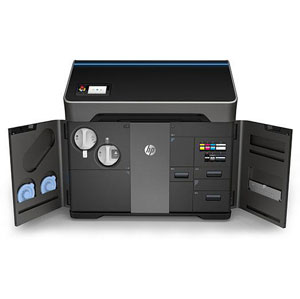Clemson Design Class Teaches 3D Printing Techniques
Students at Clemson University are getting first-hand experience on how to conceptualize, develop and build medical devices through 3D printing in a senior design class.
Since 2009, the 3D printing market has exploded and colleges and universities have led the way in exploring the technology's possibilities. At Clemson University, bioengineering professor John DesJardins is teaching his students how to design and create biomedical devices with 3D printers.

Clemson University's engineering school
In his senior design class, bioengineering students work to create new next-generation devices that meet federal requirements. Students start by drawing a sketch and then creating a rough prototype using common materials. The next step is generating a model through computer-aided design software and printing the product in cheap plastic on a 3D ABS printer.
"The use of a 3D printer is really a game changer for students because they will be able to know whether or not what they were thinking was right or wrong — and to improve upon it quickly without the need to spend a lot of money or to be terribly concerned with getting it right the first time," said DesJardins.
DesJardins's course is focused on helping students build the best final product. Students learn how to follow Food and Drug Administration rules such as policies and quality systems regulations. DesJardins said he aims to teach his students how to be able go through the design process and to explain their ideas with those working in the healthcare field.

HP Jet Fusion 580 Color 3D Printer
The 3D printers available to students at Clemson range from ABS printers that use cheap plastic and more expensive models that print using nylon or ceramic. Students have access to an HP Jet Fusion 3D printer that is designed "to enable manufacturers to produce engineering-grade, functional parts in full color, black or white in a fraction of time," according to Camille Caron, director of education and sustainability for HP's 3D Printing & Digital Manufacturing business.
"Production-grade 3D printing has historically been out of reach for many universities for several reasons — mainly because of the sheer size of the printer and high price points — but with the democratization of 3D printing and lower barriers to entry, universities are transitioning from consumer-grade 3D printers to industrial-grade systems. Today's advanced 3D printing empowers designers to innovate in new ways not possible before, providing the ability to prototype on production-grade technology with new levels of speed and creative thinking," said Caron.
Students in DesJardins's class get a finished product that they can take with them after the semester ends. "Most of the things that they make are unique and they focus on patentability and innovation, so a lot of these products that they come up with have the potential to be patented," said DesJardins.
Other universities are also exploring 3D printing using the HP Jet Fusion 500/300 series printers. Through the University of Louisville's Rapid Prototyping Center, students are able to create products that can be used for engineering, dental and medical school purposes. The University of Texas at Arlington is also using 3D printers to develop airframes for its annual aircraft competition.
About the Author
 Sara Friedman is a reporter/producer for Campus Technology, THE Journal and STEAM Universe covering education policy and a wide range of other public-sector IT topics.
Sara Friedman is a reporter/producer for Campus Technology, THE Journal and STEAM Universe covering education policy and a wide range of other public-sector IT topics.
Friedman is a graduate of Ithaca College, where she studied journalism, politics and international communications.
Friedman can be contacted at [email protected] or follow her on Twitter @SaraEFriedman.
Click here for previous articles by Friedman.